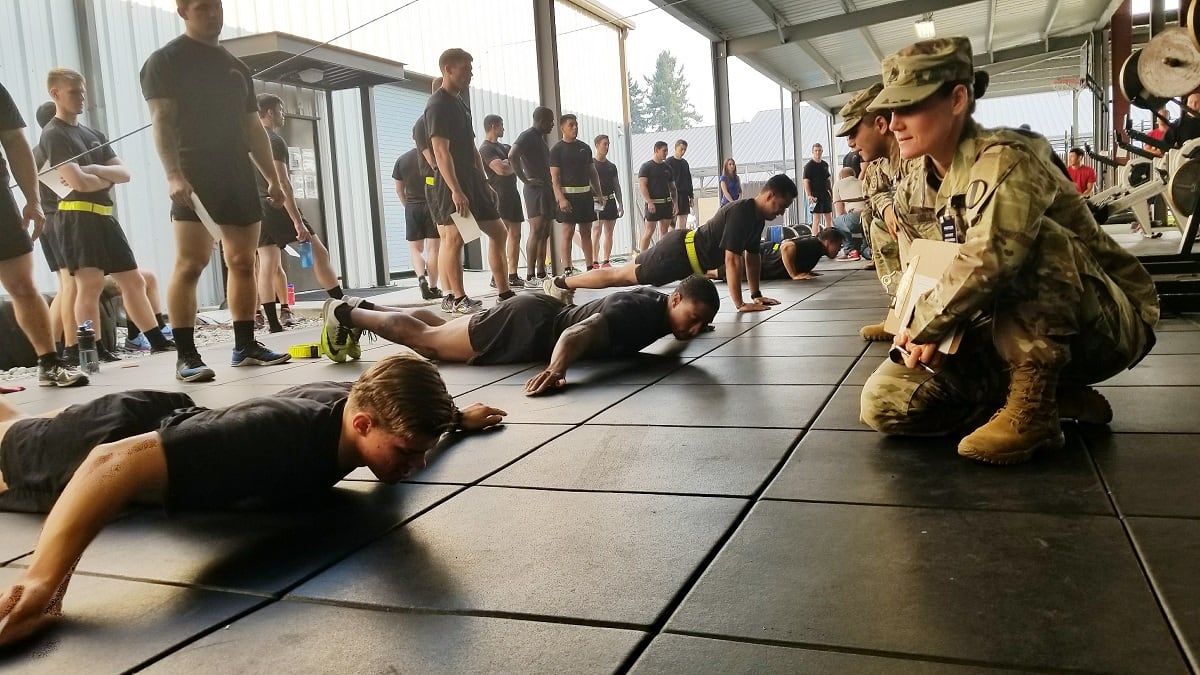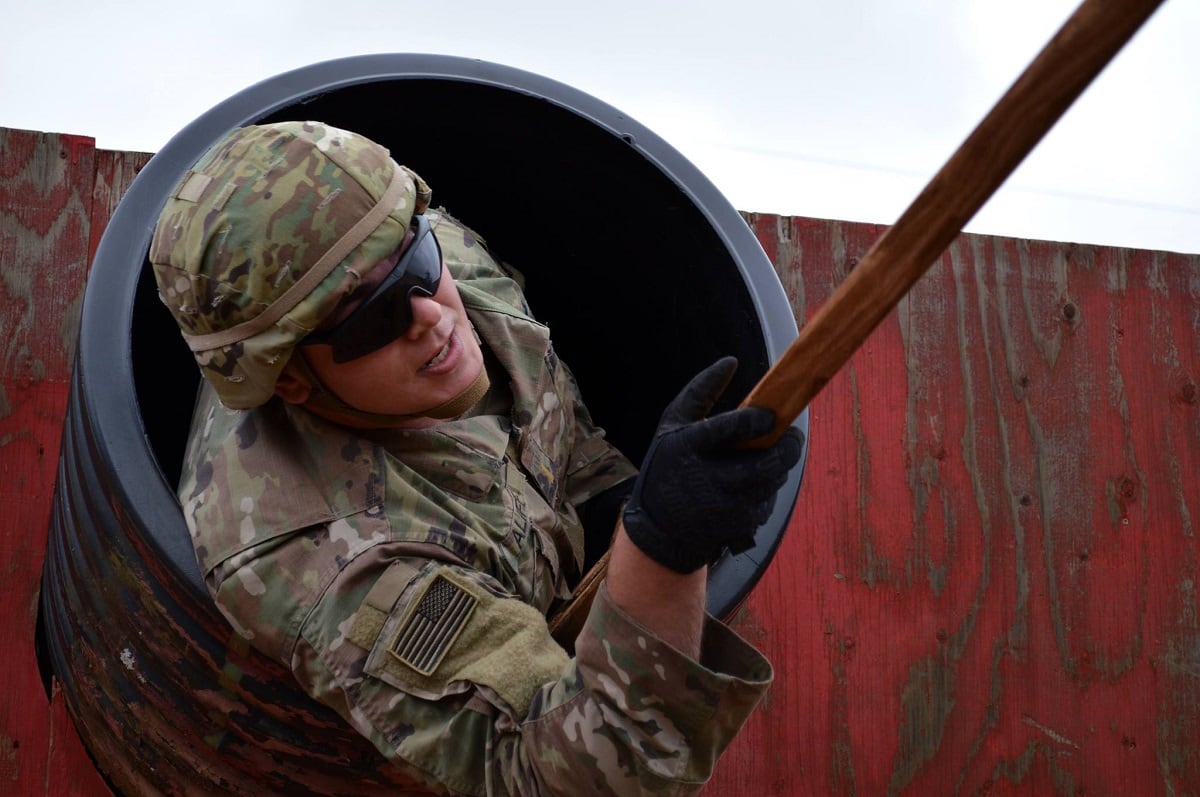The Army kicked off a pilot program for the imminent Army Combat Fitness Test at the beginning of October, studying 60 battalions as they train and administer the new regimen.
Meanwhile, Army Forces Command has selected 30 battalions to train with a cadre of health and fitness professionals, to see what kind of support units it will need not only to implement a new PT test, but to build combat effectiveness and reduce injuries to the degree the Army is looking for with its Holistic Health and Fitness initiative.
“In the Army, we all like to train our beach bodies," Maj. Gen. Malcolm Frost, head of the Center for Initial Military Training, said Monday at the AUSA annual meeting in Washington, D.C.
For example, the ever popular chest and arms.
“What we do not train is the posterior muscle groups and our core, and that’s why so many soldiers have shoulder injuries, have knee injuries, have lower back and hip injuries — because we have not trained our bodies for the life of a soldier,” he added.
The idea is to create an Army-wide PT plan, rather than leave it to local commanders entirely.
“As a former junior commander, I always thought I knew what was best for fitness. Well, guess what? I don’t, and our commanders don’t,” Maj. Gen. Malcolm Frost said. “And every two years, our units go through these cycles of PT programs and facility builds that do not have the staying power because they were not institutionalized.”
For more coverage from the AUSA annual meeting, click here.
The Occupational Physical Assessment Test was the first step, in 2017, the first-ever physical fitness test required to join the Army. ACFT takes it a step further, requiring an occupational measure of fitness throughout a soldier’s career.
But if soldiers are going to take a tougher test, they’ve got to train for the tougher test, and it will require more staff and facilities than what the Army has widely available now.
“We have centralized medical treatment facilities that look at you and take care of you after you’re already broken,” Frost said. “And we have outdated Morale, Welfare and Recreation gymnasiums that can be used by [anyone] who can access them.”
Ideally, over the next decade, the Army hopes to build Soldier Performance Readiness Centers, complete with an ACFT field, a terrain run park and facilities to practice with weights, kettle bells and medicine balls.
Those centers will also have experts on site to support soldiers in a diet and exercise plan.

Last fall, when the Army was piloting two separate PT test ideas, troops trying out the Soldier Readiness Test were given different levels of equipment and professional staff to get them ready.
Not surprisingly, the units with a full complement of equipment and fitness experts fared the best. So, while the SRT didn’t move on to the next round, its lessons learned are continuing in another FORSCOM pilot program, Frost said.
An “H2F light” program has gotten off the ground with 30 battalions, Frost said.
“We don’t have the facilities built, but they’ve modified some of their facilities, they’ve purchased some of the equipment that’s necessary — but, more importantly, they’ve staffed registered dietitians, occupational therapists, physical therapists and strength and conditioning coaches in those 30 battalions,” he said.
RELATED

And to make sure that leaders from the bottom to the top are on the same page with these fitness principles, professional military education at every level will include more advanced instruction on health and fitness.
“You cannot just throw it at the Army,” Frost said. “You have to develop the leader education program all the way through the career of a soldier.”
For example, a soldier will learn the basics of healthy behaviors and movement in their basic training or basic officer courses, then work their way up. Exercise science will be part of the curriculum at the Basic Leader Course for future sergeants, while officers at the Pre-Command Course will learn to plan, budget and assess their own H2F programs.
Meghann Myers is the Pentagon bureau chief at Military Times. She covers operations, policy, personnel, leadership and other issues affecting service members.




